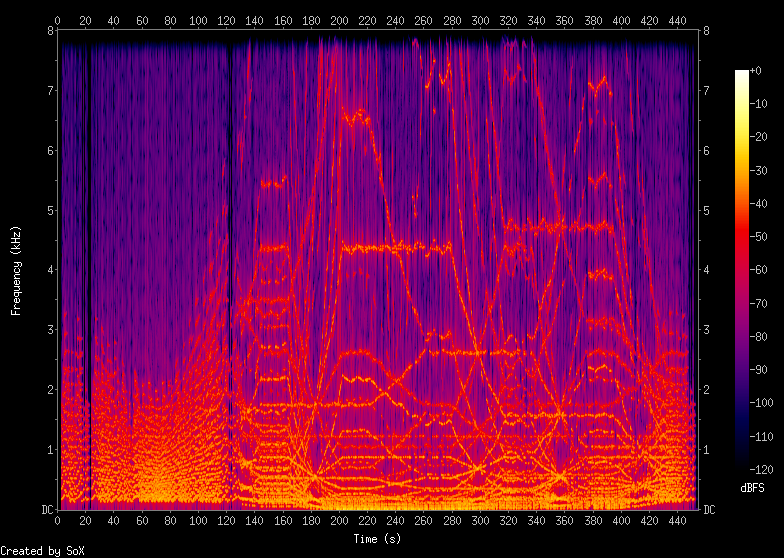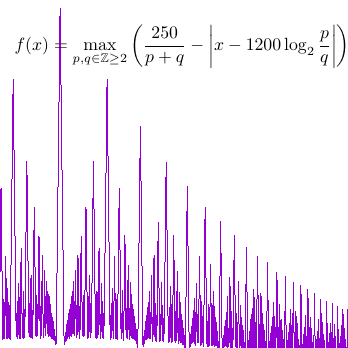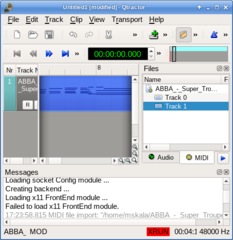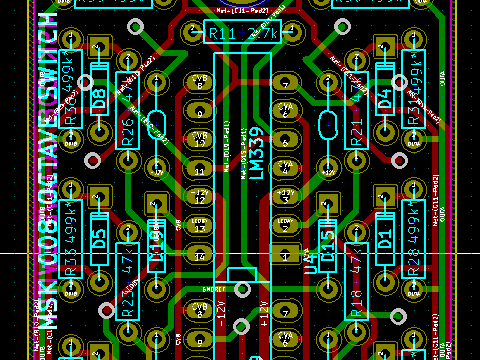tag "software"
Where is that site?
There's a lot of talk right now about international trade. Everyone wants to know where the things they buy come from. But do you know where the Web pages you visit are really located? This tool can help you find out where you're actually connecting to when you visit a Web site. READ MORE
Alternate harmony with additive synthesis
Much of musical harmony comes down to combining notes that share harmonics. Sounds produced by (some...) physical objects typically have consistent waveforms, where each wave is the same shape as the last. That is also typical of modular-synth oscillators; and its consequence is that the spectrum always consists of a sum of sine waves all at integer multiples called harmonics of one frequency called the fundamental. The proportions and phases of the different harmonics determine the shape of the waves, and those can vary a lot, but the general pattern of integer multiples is fixed. If you play a note like D with a fundamental frequency of 293.7 Hz, it will have its harmonics at 293.7 Hz, 587.4 Hz, 881.1 Hz, 1174.8 Hz, 1468.5 Hz, 1762.2 Hz, and so on. READ MORE
Maximizing inharmonicity
As I've said before, I'm interested in slow ambient drones - sounds that smoothly change their texture over a period of time without any sharp boundaries or beats. If you have something like this playing in the background, I want for it to never grab your attention, but when you occasionally do focus on it, you notice something different each time. In my " Totally tubular" posting last month, I talked a bit about making inharmonic bell sounds using a hardware modular synth. This week I've been playing with additive synthesis in the Csound software modular. READ MORE
Free MIDI software rundown
Modular synthesis involves a lot of on-the-fly experimentation with the hardware, but if you're going to make music in a preplanned way, there's a good chance you will end up involving a computer and connecting it to your modular via MIDI. Here are notes on some of the software I like to use for that and related tasks. I'm focusing on stuff that will run under Linux, but many of these packages are cross-platform. READ MORE
Free EDA software rundown
The MSK 008 Octave Switch is planned to launch tomorrow and I've already posted the manual; so I thought it would be fun for this week's Web log entry to introduce some of the software tools I use for producing, and especially for documenting, module designs. My designs are free, my roots are in the free software community and my values emphasize all aspects of free speech, and so I try to stick to free software in running my operation. The title says EDA software ("Electronic Design Automation") but in fact this list covers some other engineering functions too, that people don't usually think of as EDA. READ MORE




